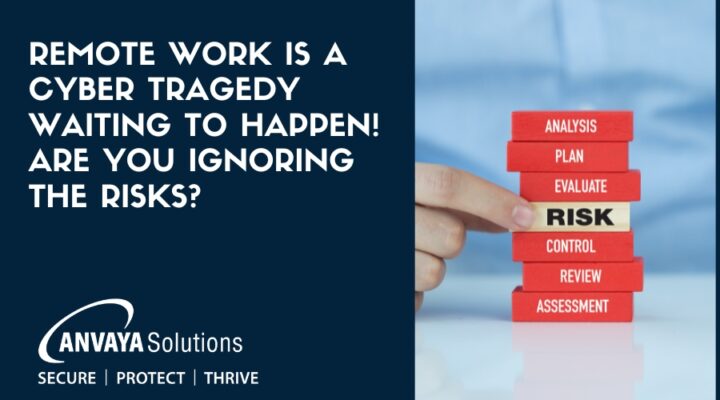
The shift towards remote and hybrid work models, accelerated by the global pandemic, has undeniably transformed the workplace landscape. While this evolution offers flexibility and opportunities for both employers and employees, it also presents a significant challenge: cybersecurity. As remote work becomes more prevalent, the question arises, “Is Your Company Exposing Itself to a Cyber Catastrophe?”
Introduction to Cybersecurity in the Modern Work Environment
The transition to remote work has been seamless for many, yet it illuminates a glaring oversight in the cybersecurity measures of numerous organizations. This oversight is not trivial; it poses a direct threat to the integrity and security of a company’s most sensitive data.
The Cybersecurity Training Gap and Its Implications
Shockingly,
- 33% of companies do not provide their remote workers with cybersecurity training.
- This gap in training is alarming, given that 74% of remote workers have access to sensitive data, which could potentially lead to severe security breaches.
- Moreover, despite the clear risks, 44% of organizations are planning to expand their remote workforce.
The Risk Landscape for Remote and Hybrid Work Models
The expansion of the remote workforce amid known vulnerabilities points to an urgent need for action. Companies must prioritize equipping their remote employees with the knowledge and tools necessary to fend off cyber threats.
The Urgent Need for Action in Cybersecurity Training
The statistics serve as a stark reminder of the critical need for comprehensive cybersecurity training. The future of work depends on robust cybersecurity measures to protect against the increasing threat of cyber attacks.
Best Practices for Cybersecurity in Remote Work
To secure their digital future, organizations must adopt best practices in cybersecurity. This involves developing a culture of security awareness and integrating essential cybersecurity tools and practices into the remote work environment.
Securing the Future of Work
The path forward for companies is clear: to adapt and secure their workforce against cyber threats. By doing so, organizations can ensure their operational continuity and preserve stakeholder trust in the digital age.
Conclusion
The advent of remote work necessitates a proactive approach to cybersecurity. Organizations must recognize the urgent need for cybersecurity training and take decisive action to safeguard their future. By embracing a culture of security awareness and implementing effective cybersecurity measures, companies can navigate the challenges of the modern workplace with confidence.
FAQs
- What percentage of companies do not offer cybersecurity training to their remote workers?
33% of companies fail to provide cybersecurity training to their remote employees. This significant oversight exposes organizations to heightened risks of cyberattacks, especially as remote work becomes more prevalent.
- Why is cybersecurity training essential for remote workers?
Cybersecurity training is crucial for remote workers because it equips them with the knowledge and skills needed to recognize and respond to cyber threats effectively. Given that remote employees often access company networks and sensitive data from potentially unsecured locations, training helps mitigate the risk of breaches that could lead to significant financial and reputational damage.
- How does remote work increase cybersecurity risks?
Remote work increases cybersecurity risks in several ways. Firstly, remote workers often use personal devices and home networks, which may not have the same security measures as in-office systems. Secondly, the lack of physical oversight can lead to lax security practices, such as weak passwords or the sharing of sensitive information over insecure channels. Lastly, remote work environments can make it harder to quickly respond to breaches, giving cyber attackers more time to exploit vulnerabilities.
- What are some best practices for improving cybersecurity in a remote work environment?
Best practices include implementing strong password policies, using multi-factor authentication, regularly updating and patching systems and software, offering comprehensive cybersecurity training, establishing secure VPN connections for remote access, and promoting a culture of security awareness among all employees. Companies should also invest in advanced security solutions, such as endpoint protection and intrusion detection systems, to safeguard their networks.
- Can you provide examples of companies that have successfully implemented cybersecurity measures?
While specific company names weren’t provided in the article, many leading tech companies, financial institutions, and healthcare organizations are known for their robust cybersecurity measures. These companies often share their success stories through case studies, cybersecurity conferences, and industry publications, detailing their approaches to training, system hardening, and incident response.
- What steps can companies take to secure their future against cyber threats?
Companies can secure their future against cyber threats by adopting a proactive and comprehensive approach to cybersecurity. This includes conducting regular risk assessments, developing incident response plans, investing in ongoing employee training, and staying informed about the latest cyber threats and defense mechanisms. Additionally, fostering partnerships with cybersecurity experts and organizations can provide valuable insights and support in strengthening security postures.
Conclusion
The cybersecurity challenges posed by the shift to remote work are significant, yet not insurmountable. By acknowledging the urgency of the situation and implementing strategic measures, companies can protect themselves against potential cyber catastrophes. It is crucial for organizations to foster a culture of cybersecurity awareness and adopt best practices to ensure the safety and integrity of their operations in the digital era.
